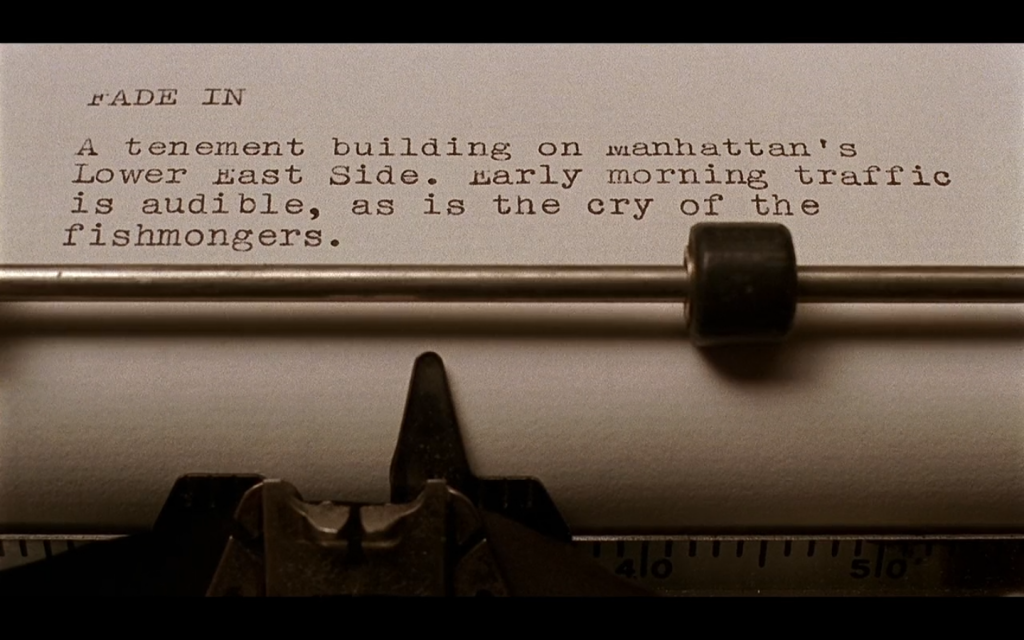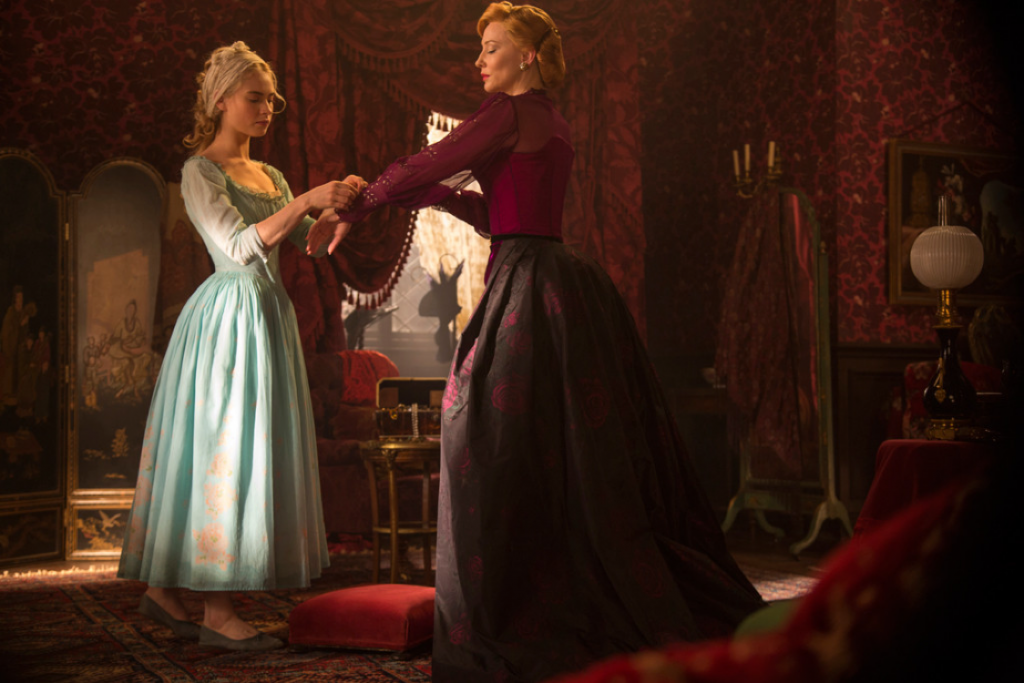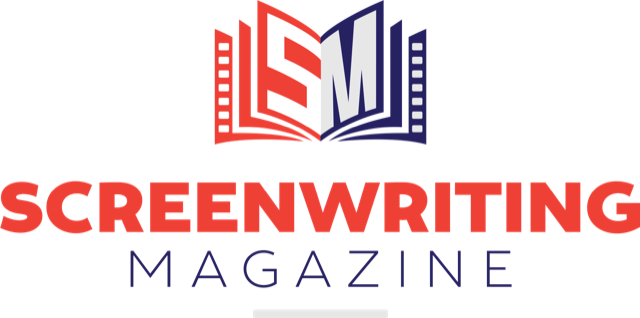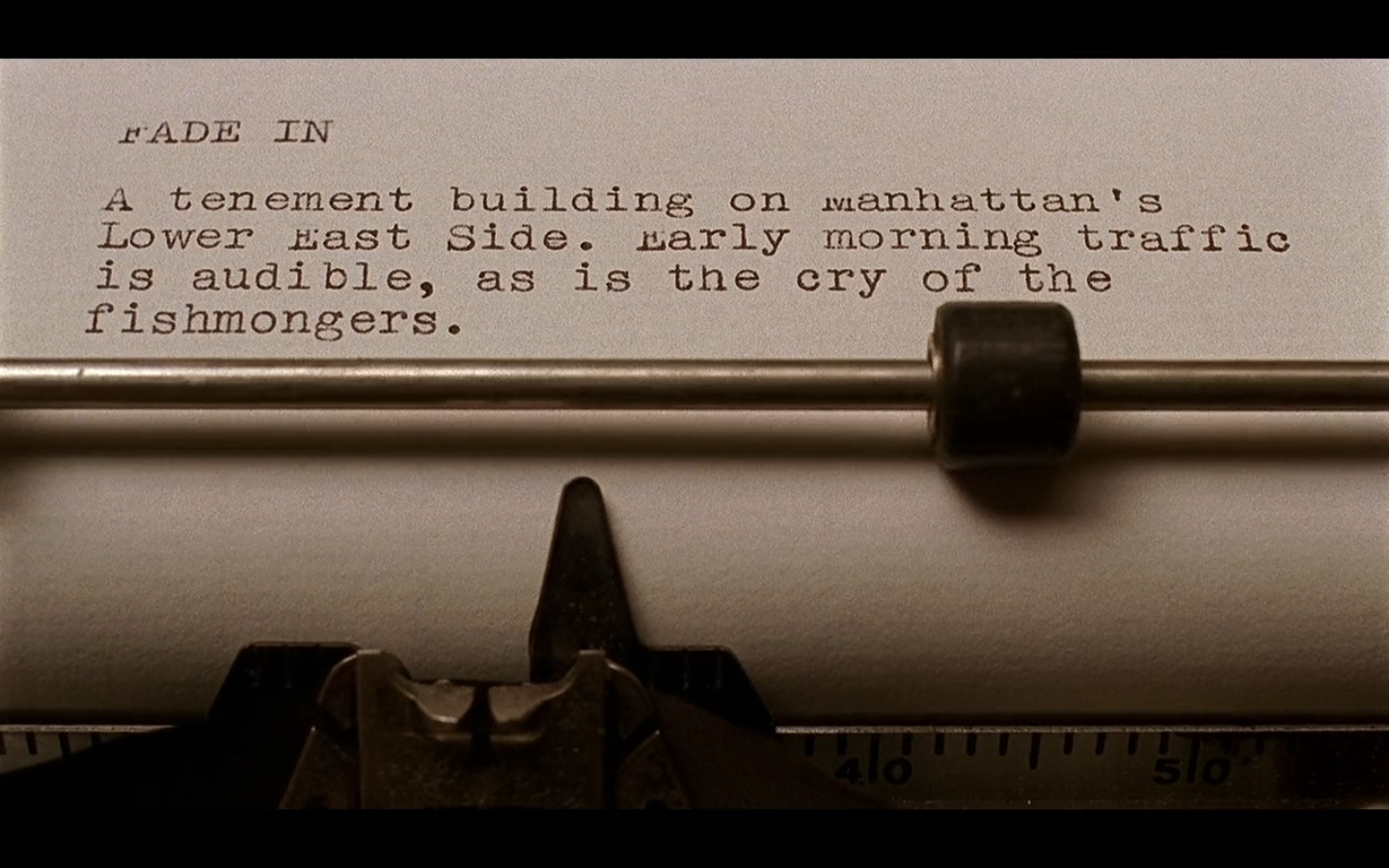
A screenshot from Barton Fink. Photo credit: 20th Century Fox
A screenplay is many things…
- It’s a blueprint or a map from which a film is made.
- It’s a document that includes the description of sets, the movement of actors, the dialogue and the sound effects—basically everything the audience sees and hears– for one complete narrative story.
- It’s typically (for a feature length film) between 90-120 pages of text composed in a very strict format.
Webster’s Dictionary defines a screenplay as “A script for a film including dialogue and descriptions of characters and sets.” Which is true. Except, of course, a screenplay is much more complicated than that.
For instance, you could write 120 pages of dialogue and description but not write a “story.” Is that still a screenplay? I don’t think so.
The element of story is so fundamental to the idea of a screenplay that it should arguably be part of the definition. Therefore, if we’re going to discuss what is a screenplay, we should also discuss what is a story.
Story is common to many, in fact, most art forms. That is most obvious in film, theater, television and fiction, but it is also discussed as a feature of painting, sculpture, photography, fashion, poetry, dance and music. Each art form conveys a story in a different way.
Aristotle described a story as having a “beginning, middle and end.” In a play, the story travels on the dialogue with support from movement, stage pictures and sometimes music. Yes, you could remove the dialogue from a play but then it wouldn’t be a play, it would be a mime.
In fiction, a story is typically told though the internal experience of a character or characters—yes, much of a novel or short story happens externally, but the arc of the story, or the main character’s journey, is internal.
A film’s story cannot be told exclusively in dialogue like a play; nor can it be told internally like fiction (though voiceover can create a bit of that effect.)
You must have both action (as seen in the stage descriptions) and dialog (what the characters say to each other) to create a story, and also to create a screenplay.
Let’s look at an example to see how it’s done. In the classic tale of Cinderella, we start with the beginning — a young girl is being abused by her stepmother and two terrible stepsisters. And, this story, or the screenplay that charted it, can only start two ways. With action or dialog.

Cinderella (2015). Photo courtesy: Disney Pictures
Here’s an example of starting with action: Cinderella sews her stepmother’s dress.
Here’s an example of starting with dialog:
STEP MOTHER
Cinderella, please fix my dress.
What happens next? You can choose to write more action. Or either Cinderella or her stepmother must speak. That is the beginning. You have started your story. And, now you must find the middle and end to complete the task of writing a screenplay.




8 Replies to "What is a screenplay?"
Michael Tove October 3, 2016 (7:58 am)
I agree that a screenplay is more than a “Script for a film…” but I think the uncertain term here is “script.” For starters, if film is art, then a script is a plan for the creation of art and in this case, I think the art is one of story. Accordingly, I suggest a script is a blueprint for a story. As a blueprint, metaphorically, the script not only sets for the “brick and mortar” foundation of the story, but details the components which go into its construction: the framing (story arc), the wiring (intentions and obstacles), details of each room (the characters), etc. Everything that is necessary to reveal the story being told is built into a good script and done so with deft integration and beauty such that we envision the finished product and without being merely overwhelmed by the construction details themselves. That may not satisfy the Webster’s staff, but I suspect it’s a better way of envisioning what a screenplay ought to be.
Marshall Thornton October 4, 2016 (7:29 am)
Thanks for the comment. The blueprint metaphor was kicked around a lot when I was at UCLA. It’s a good analogy. Though in architecture renderings are also used to convey what a finished building should look like. I think the best scripts are both blueprints and renders.
Patricia Poulos October 3, 2016 (12:23 pm)
Thank you for giving us this.
Kind regards,
Patricia
Gina Gajdosik October 3, 2016 (4:10 pm)
It all starts with character, characters create the story. Characters in films are to the extreme. It could be a trait, or a motivation, or a personal conflict, but it must be profound.
Steven Hale October 3, 2016 (8:35 pm)
These characteristics (scene, sequence, situation, arc, etc.) are secondary. It’s like responding to the question “What is a journey?” with the answer “A journey is a car.”
To continue the metaphor, if you drug someone, put him in a plane, fly him to another country, and then bring him back to his house before he wakes up, has he gone on a journey?
A screenplay comes into being when the reader (of the written version) or the viewer (of the filmed version) undergoes a series of changes. Scene, situation, arc, act structure, etc. are ways to effect these changes. Nothing exists on the page or on the screen without the moving of an audience.
Marshall Thornton October 4, 2016 (7:31 am)
Thanks for the comment. Yes, that’s true of all the arts. In fact, the degree to which you move the audience directly relates to how your art is valued.
Mohit Mahashabde October 4, 2016 (8:33 am)
Story can be of a paragraph,a single page or more than that. But Screenplay… It’s very comprehensive, detailed, to the point. Screenplay is a plan of a film. Screenplay shows the story to the audience rather than telling it orally/verbally.
That’s all I know as per my mere knowledge, but, I want to know & learn the basic thing that how to develop a story or a very basic plot if I have an basic idea/concept, how to think & brainstorm to achieve this. Want help for this.
Marshall Thornton October 4, 2016 (8:49 am)
You’re right that a story can be any length. But then, so can a film which would been a screenplay can also be any lengths. If you’re writing a spec script for a commercial film it needs to be between 90 and 120 pages. I’d also say that telling is bad in fiction as well. No matter what art form you’re pursing it’s best to allow the audience room to reach a conclusion on their own – hopefully the one you’re going for.